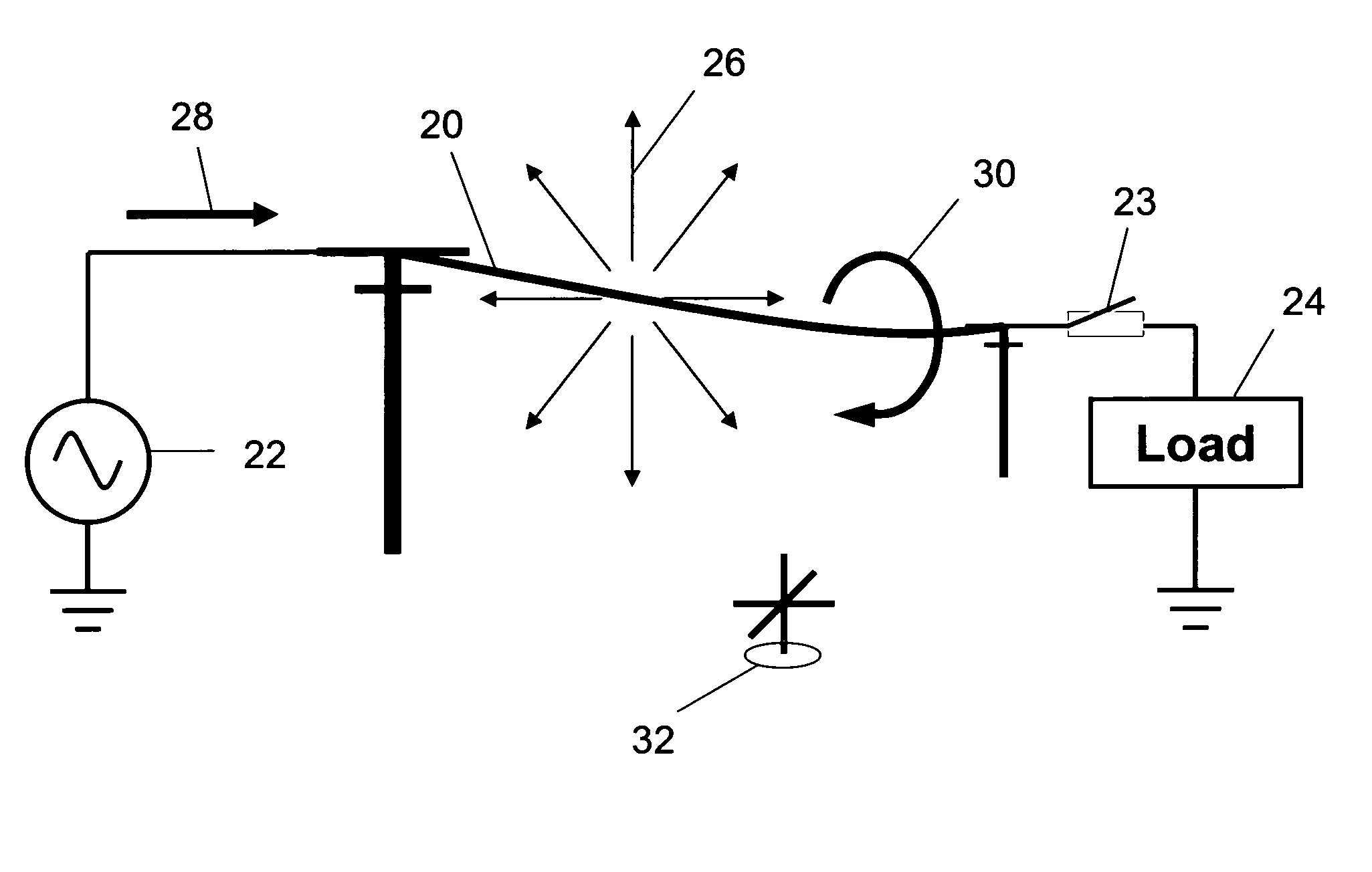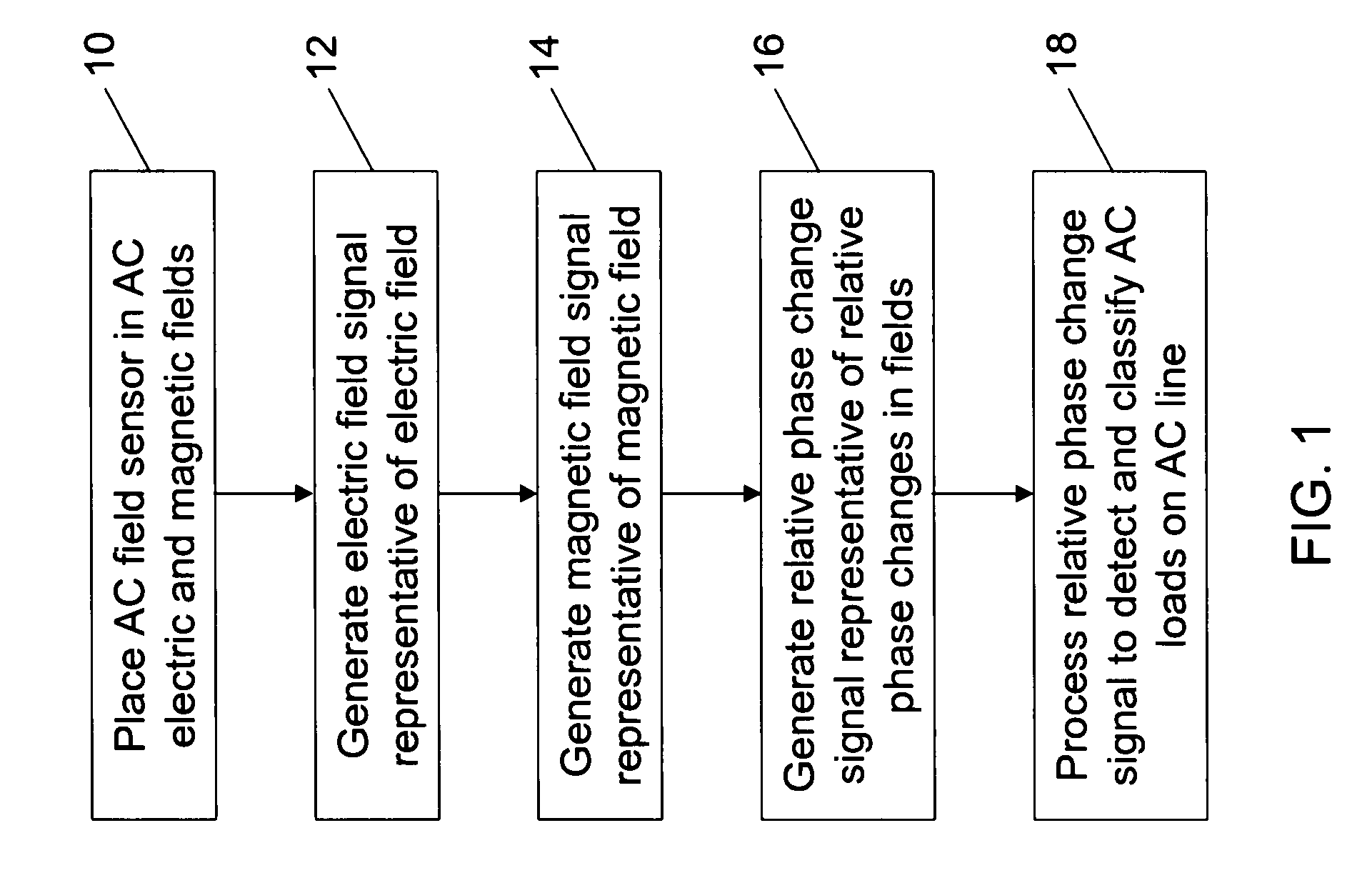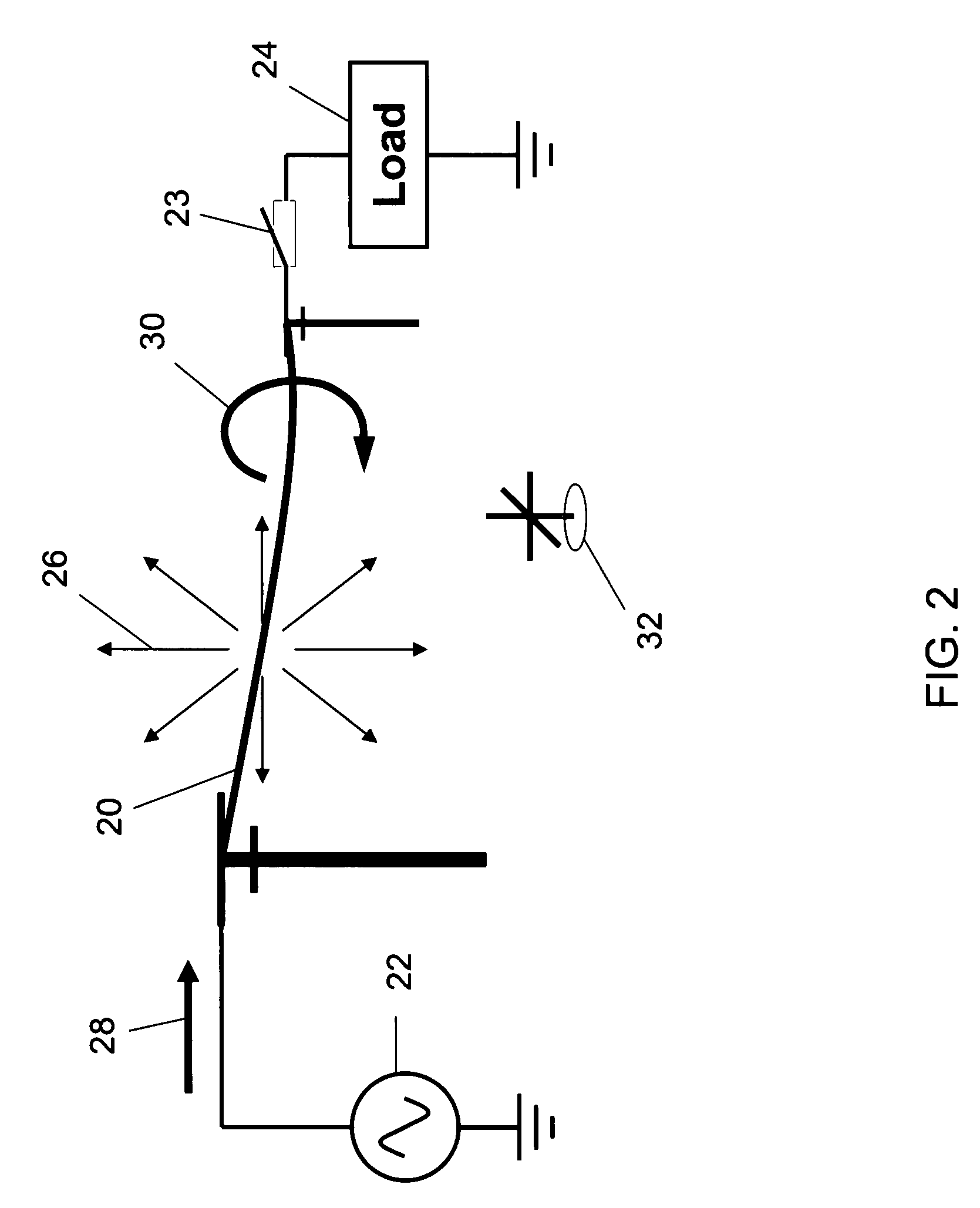Methods for detecting and classifying loads on AC lines
a technology of ac lines and load classification, applied in the direction of oscillation comparator circuits, power supply testing, instruments, etc., can solve the problems that ac magnetic field sensors cannot be used to classify the type of load on an ac power line, and ac magnetic field sensors cannot be used to determine if a load is presen
- Summary
- Abstract
- Description
- Claims
- Application Information
AI Technical Summary
Benefits of technology
Problems solved by technology
Method used
Image
Examples
Embodiment Construction
[0023]Methods for detecting and classifying loads on alternating current (AC) lines are provided. In an exemplary embodiment, one such method (see FIG. 1) includes the steps of placing an AC field sensor in the AC electric and magnetic fields generated by an AC line (block 10); generating an electric field signal representative of the AC electric field received by the AC field sensor (block 12); generating a magnetic field signal representative of the AC magnetic field received by the AC field sensor (block 14); generating a relative phase change signal representative of relative phase changes between the electric and magnetic fields (block 16); and processing the relative phase change signal to detect and classify loads on the AC line (block 18).
[0024]The AC field sensor may be a combination AC electric and magnetic field sensor or separate electric and magnetic field sensors. For example, the AC field sensor may be a combination AC electric and magnetic field sensor commercially a...
PUM
 Login to View More
Login to View More Abstract
Description
Claims
Application Information
 Login to View More
Login to View More - R&D
- Intellectual Property
- Life Sciences
- Materials
- Tech Scout
- Unparalleled Data Quality
- Higher Quality Content
- 60% Fewer Hallucinations
Browse by: Latest US Patents, China's latest patents, Technical Efficacy Thesaurus, Application Domain, Technology Topic, Popular Technical Reports.
© 2025 PatSnap. All rights reserved.Legal|Privacy policy|Modern Slavery Act Transparency Statement|Sitemap|About US| Contact US: help@patsnap.com



